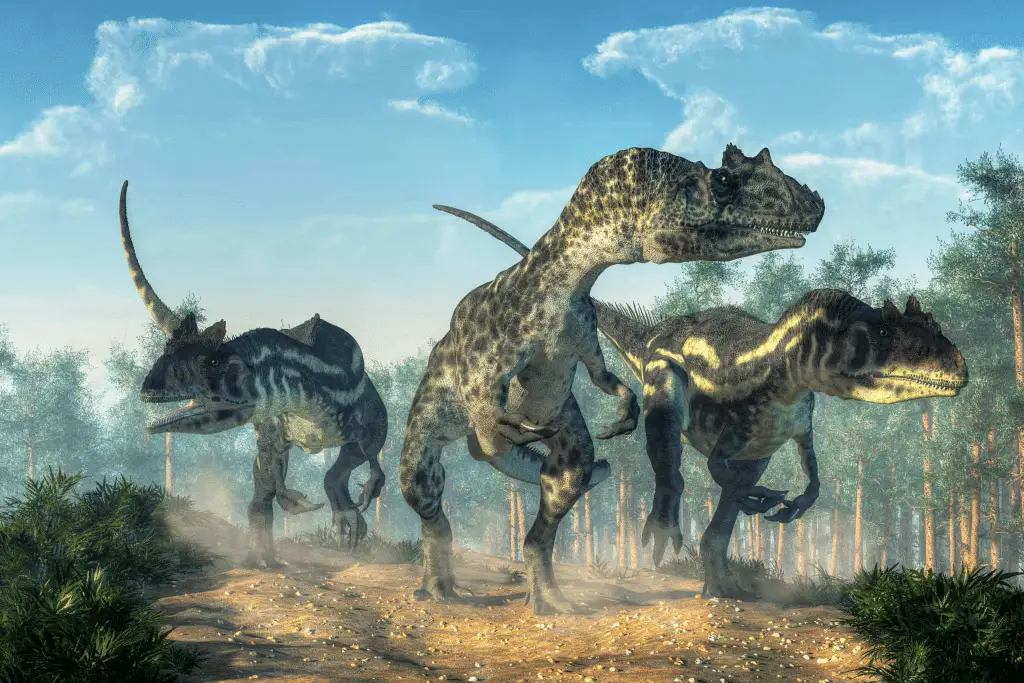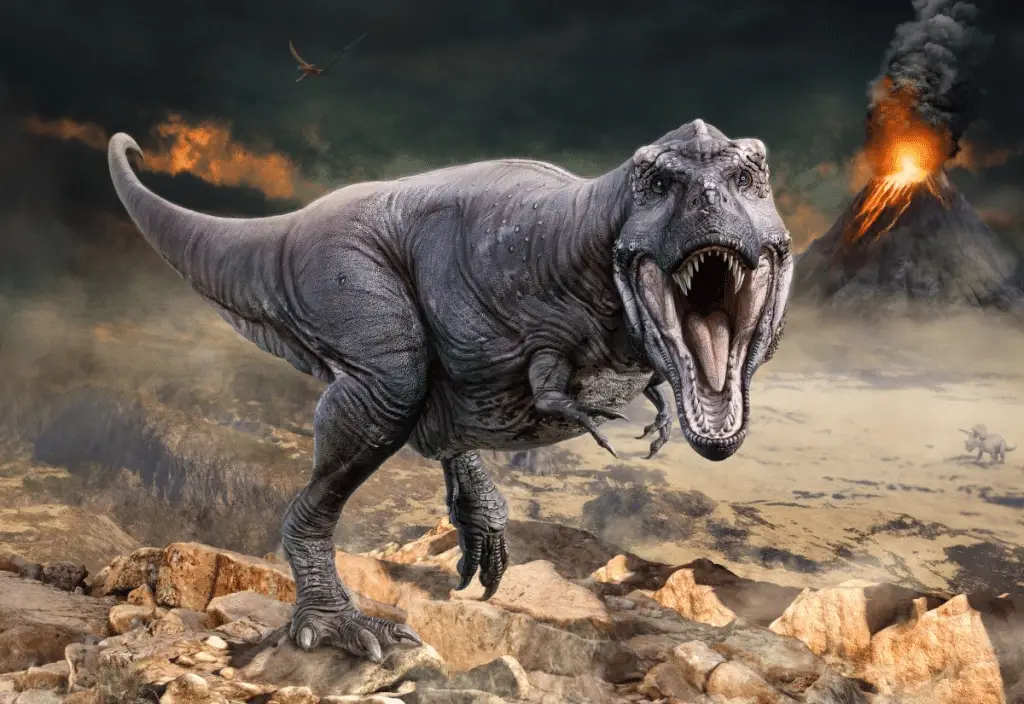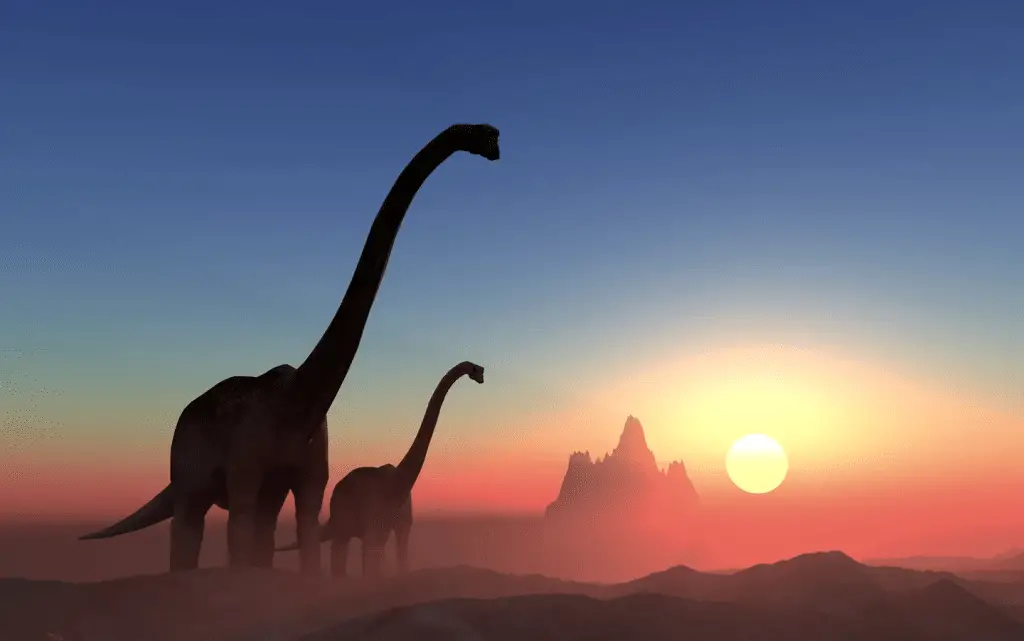About 180 million years ago, during a period of extreme climate change, dinosaurs may have developed the ability to internally regulate their body temperaturefreeing itself from dependence on solar heat.
This transition from cold-blooded dinosaurs to warm-blooded dinosaurs, or endothermymarks a turning point in the evolutionary history of these ancient giants.
Warm-blooded dinosaurs and climate change
For a long time, dinosaurs were considered creatures ectothermicsimilar to modern lizards that warmed themselves in the sun, however the discovery of dinosaur species that inhabited regions close to the poles has challenged this view, suggesting that some dinosaurs may have had the ability to survive harsh winter conditions, unthinkable for humans modern reptiles.
The debate over dinosaur endothermy has been one of the liveliest in paleontology, but now there appears to be broad consensus: some warm-blooded dinosaurs they really existed.
Doctor Alfio Alessandro Chiarenza of theUniversity College London reports that the first bones of theropods and ornithischians, two of the three major branches of dinosaurs, were found in cold regions during the Early Jurassic. This suggests that thethermoregulation may have emerged in these groups and not in sauropodsas there is no equivalent evidence of their presence in such cold climates.
Chiarenza explains that Different climate preferences among dinosaur groups emerged around the Jenkyns eventabout 183 million years ago, when intense volcanic activity caused global warming and the extinction of several plant groups.
This period of high temperatures, paradoxically, may have stimulated the development of endothermy, allowing theropods and ornithischians to thrive in colder environments, increasing their activity, growth and reproduction, and giving rise to the first warm-blooded dinosaurs.
The co-author, the Dr. Sara Barela of the University of Vigo, underlines that birdsalso theropods, they may have inherited their unique temperature regulation from this Early Jurassic period. Meanwhile, sauropods, known for their colossal size, may have developed other strategies to adapt to environmental changes, such as increasing body size, which would have helped keep their temperature stable during cold nights.

Although sauropods moved closer to the poles during the Cretaceous, as demonstrated by the Patagotitanthe overall warmer climate of that period and the lack of advanced thermoregulatory adaptations like those of ornithopods may have limited their expansion far north.
This study, published on Current Biologynot only sheds light on the thermal evolution of dinosaurs but also suggests that endothermy in birds is a very ancient trait, predating similar evolution in mammals by about 50 million years.
An evolution due to climate
The discovery of the existence of some warm-blooded dinosaurs, as previously mentioned, revolutionized our understanding of these ancient reptiles.
The debate whether warm-blooded dinosaurs (endothermic like birds and mammals) really existed, as opposed to cold-blooded ones (ectothermic like modern lizards), has occupied paleontologists for decades, but the discovery of dinosaur species that lived in polar regions, where winter conditions were too severe for modern reptiles, he suggested that some dinosaurs had developed internal mechanisms to maintain heat.
After the analysis by Dr. Alfio Alessandro Chiarenza and his team on the first bones of theropods (the most famous are T. Rex and Velociraptors) and ornithischians found in cold regions during the Lower Jurassic, the conclusion was that thermoregulation may have emerged in these groupswhile sauropods, the third major branch of dinosaurs, showed no equivalent evidence of presence in cold climates.

The Jenkyns event, characterized by intense volcanic activity and resulting global warming, appears to have been a catalyst for development of warm-blooded dinosaurs.
Confirming this theory about warm-blooded dinosaurs, as previously mentioned, Dr. Sara Barela highlighted that birds, which are theropods, may have inherited their temperature regulation from this period.
Sauropods, on the other hand, during the Cretaceous, when the climate was warmer, moved closer to the poles, and the Patagotitan, one of the candidates for the largest land creature of all time, is an example of a sauropod that lived in these regions. Plant fossils found near titanosaur remains indicate that the Average annual temperatures were between 10 and 15 °Cmilder conditions than in the Jurassic.
The authors of the study suggest that although sauropods could survive at high latitudes during the Cretaceous, they were not warm-blooded dinosaurs like ornithopods. The enormous size of sauropods may have helped keep their body temperatures relatively stable during at night, thanks to the large thermal mass.

In conclusion, the study published in Current Biology offers a new perspective on the thermal evolution of dinosaurs and on the origin of endothermy in birds. While the exact details of this evolutionary process remain the subject of further research, it is clear that climate change has played a crucial role in the adaptation of these incredible animals to the different environmental conditions of our planet.
If you are attracted by science or technology, continue to follow us, so you don’t miss the latest news from all over the world!
#Warmblooded #dinosaurs #history #million #years
